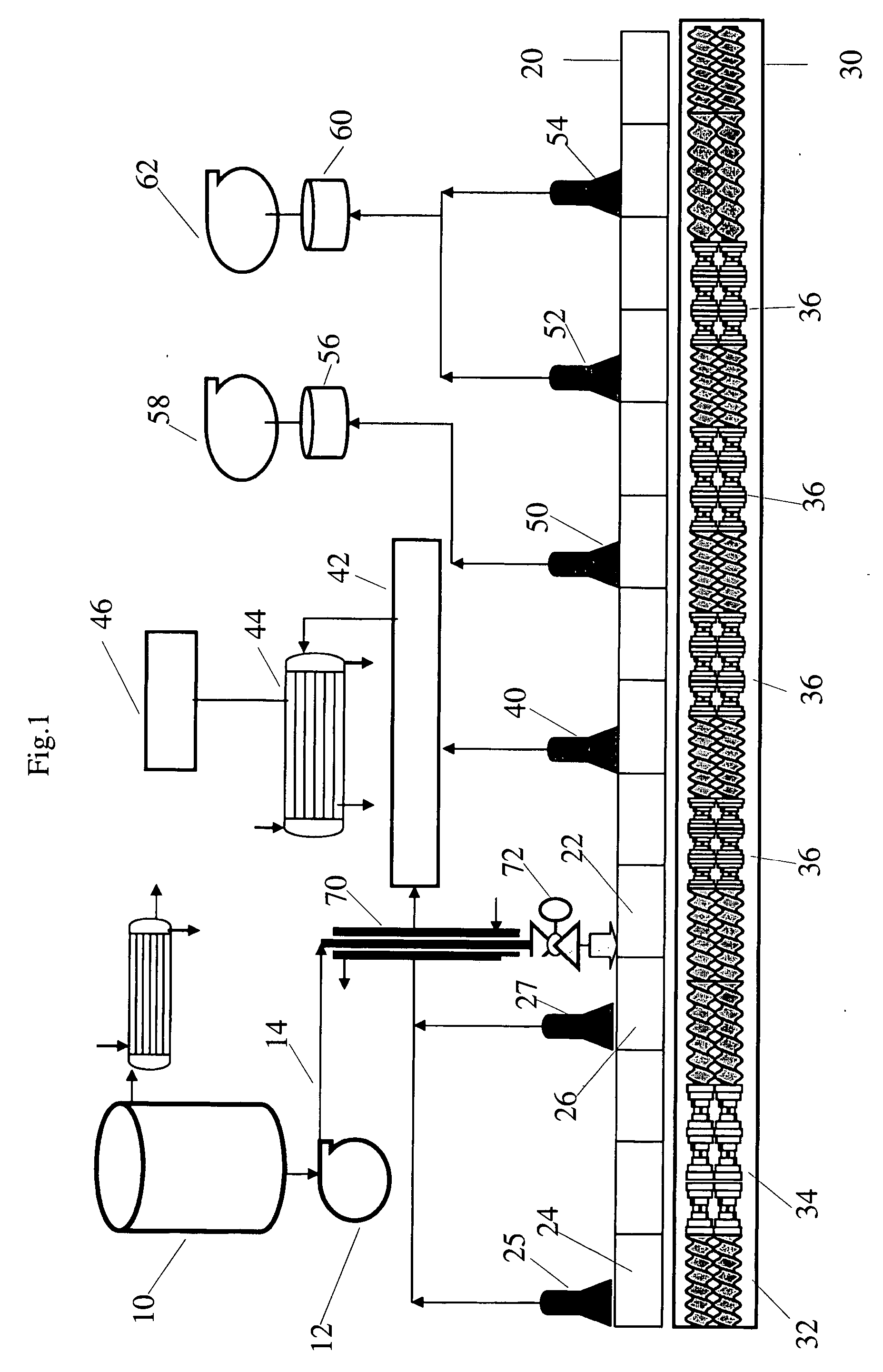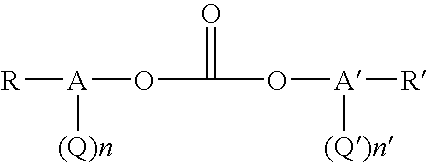Process to make polycarbonate from bismethylsalicylcarbonate (BMSC)
a technology of bismethylsalicylcarbonate and polycarbonate, which is applied in the field of preparing polycarbonate, can solve the problems of high cost, large equipment and capital investment, and the inability to operate a process which requires phosgene, and achieves the effect of minimizing residence time and superior polycarbonate production
- Summary
- Abstract
- Description
- Claims
- Application Information
AI Technical Summary
Benefits of technology
Problems solved by technology
Method used
Image
Examples
examples
[0102] The following examples are set forth to provide those of ordinary skill in the art with a detailed description of how the methods claimed herein are evaluated, and are not intended to limit the scope of what the inventors regard as their invention. Unless indicated otherwise, parts are by weight, temperature is in ° C.
[0103] Molecular weights are reported as number average (Mn) or weight average (Mw) molecular weight and were determined by gel permeation chromatography (GPC) analysis, using a polycarbonate molecular weight standard to construct a broad standard calibration curve against which polymer molecular weights were determined. The temperature of the gel permeation columns was about 25° C. and the mobile phase was chloroform.
[0104] Fries content is measured by the KOH methanolysis of resin and is reported as parts per million (ppm). The Fries content is determined as follows. First, 0.50 grams of polycarbonate is dissolved in 4.0 ml of THF (containing p-terphenyl as ...
examples 1-5
[0106] Solutions of oligomeric polycarbonate in methyl salicylate were prepared by equilibrating a mixture of bis(methyl salicyl) carbonate (BMSC), bisphenol A (BPA) and transesterification catalyst, tetrabutylphosphonium acetate (TBPA), at a temperature in a range between about 160° C. and about 220° C. in a batch melt reactor under a nitrogen atmosphere. The reaction mixture was stirred and heated until equilibrium was reached. Equilibrium was reached in about 80 minutes at about 165° C. and in about 10 minutes at about 220° C. At equilibrium, the solution of oligomeric polycarbonate prepared from mixtures of BMSC (1.03 moles BMSC per mole BPA), BPA and TBPA (2.5×10−4 moles per mole BPA) was about 45 percent by weight polycarbonate oligomer and about 54 to about 55 percent by weight methyl salicylate.
TABLE 1Solutions of Oligomeric Polycarbonate In Methyl SalycilateMole TBPATime to[BMSC] / Catalyst perEquil TempEquil.OligomericEx.[BPA]Mole BPA° C.(min)Polycarbonate Mn11.032.5 × 10−...
examples 6-16
[0109] A 30-gallon titanium reactor, maintained at about 175° C., was used to prepare and feed the equilibrated mixture of oligomers to the feed port of the extruder using a positive-displacement, Zenith gear pump. The feed contained an oligomeric mixture of BPA, BMSC, and catalyst (25 μeq TMAH and 2 μeq sodium hydroxide) partially reacted and pre-equilibrated in the reactor to about 55 percent by weight of methyl salicylate. The BMSC / BPA molar ratio was equal to 1.025.
[0110] The extruder was a 25 mm diameter extruder, 14-barrel (L / D=56) and a 2-hole die plate. Six vent ports were used of which two were located upstream of the feed port. Conveying elements were located under feed and all vents and kneading blocks in the reaction zones between vents. The feed port was located on the upstream edge of barrel 5 for liquid injection. The vents were located upstream of barrels 1, 4, 7, 9, 11, and 13. Vents 1, 2, 3, and 4 were connected to the house vacuum manifold which is maintained at ...
PUM
| Property | Measurement | Unit |
|---|---|---|
| Temperature | aaaaa | aaaaa |
| Temperature | aaaaa | aaaaa |
| Temperature | aaaaa | aaaaa |
Abstract
Description
Claims
Application Information
 Login to View More
Login to View More - R&D
- Intellectual Property
- Life Sciences
- Materials
- Tech Scout
- Unparalleled Data Quality
- Higher Quality Content
- 60% Fewer Hallucinations
Browse by: Latest US Patents, China's latest patents, Technical Efficacy Thesaurus, Application Domain, Technology Topic, Popular Technical Reports.
© 2025 PatSnap. All rights reserved.Legal|Privacy policy|Modern Slavery Act Transparency Statement|Sitemap|About US| Contact US: help@patsnap.com



